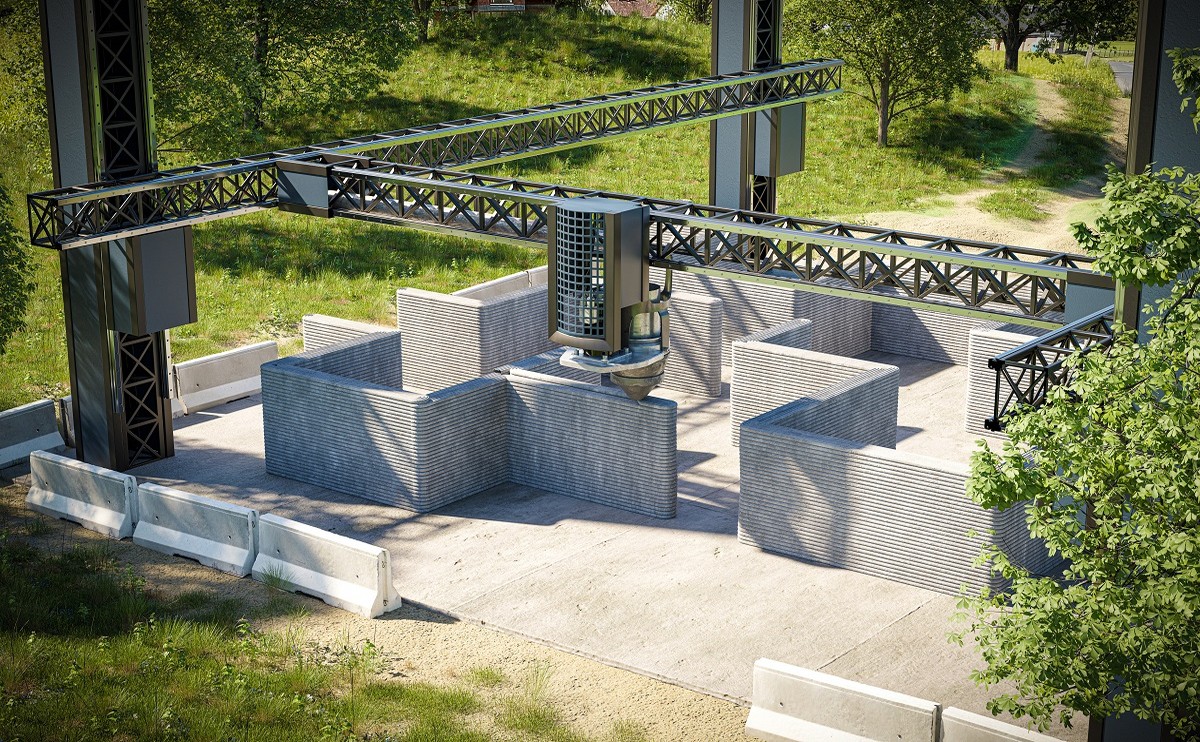Blog
The Rise of 3D Printing in Civil Engineering: Case Studies and Benefits for Bangladesh

Table of Contents
- Introduction
- What Is 3D Printing in Construction?
- How 3D Printing Works in Civil Engineering
- Global Trends in 3D-Printed Construction
- Benefits of 3D Printing for Bangladesh
- Challenges in Adopting 3D Printing
- Case Studies
- Future of 3D Printing in Bangladesh
- How Civil Engineers Can Learn 3D Printing
- Top 5 Video Courses on 3D Printing in Construction
- Top 5 Books on 3D-Printed Architecture
- Conclusion
1. Introduction
The construction industry is undergoing a technological revolution, and 3D printing is at the forefront of this transformation. In Bangladesh, where rapid urbanization, labor shortages, and cost overruns are major challenges, 3D printing offers a game-changing solution.
This guide explores:
✔ How 3D printing works in civil engineering
✔ Real-world case studies from Bangladesh and globally
✔ Cost, speed, and sustainability benefits
✔ Where Bangladeshi engineers can learn this technology
Whether you’re a civil engineer, architect, or construction professional, this post will help you understand why 3D printing is the future of building in Bangladesh.
2. What Is 3D Printing in Construction?
3D printing (or additive manufacturing) is a process where structures are built layer-by-layer using:
- Concrete, polymers, or composite materials
- Robotic arms or gantry systems
- Computer-aided design (CAD) models
Unlike traditional construction, 3D printing:
✔ Reduces labor dependency
✔ Minimizes material waste
✔ Enables complex designs
3. How 3D Printing Works in Civil Engineering
Step-by-Step Process:
- Design Phase:
- CAD model is created (e.g., using AutoCAD, Revit)
- Material Preparation:
- Special 3D-printable concrete or geopolymer mixes
- Printing Phase:
- Robotic extruder deposits material layer-by-layer
- Post-Processing:
- Curing, reinforcement insertion (if needed)
Types of 3D Printing in Construction:
- Extrusion-Based (Most Common) – Uses concrete
- Powder Bonding – For intricate designs
- Metal 3D Printing – Bridges, structural components
4. Global Trends in 3D-Printed Construction
| Country | Project | Achievement |
|---|---|---|
| UAE | Dubai Future Foundation | World’s largest 3D-printed building (6,900 sqft) |
| USA | ICON’s Affordable Homes | $4,000 houses in 24 hours |
| Netherlands | MX3D Bridge | Stainless steel 3D-printed bridge |
| China | Winsun’s 3D Villas | 10 houses in 24 hours |
5. Benefits of 3D Printing for Bangladesh
A. Cost Efficiency
- Reduces labor costs by 50-70% (Critical in Bangladesh’s skilled labor shortage)
- Material savings (Uses only needed concrete, cuts waste by 30%)
- Example: A 3D-printed house in India cost ₹5 lakh ($6,000) vs. ₹10 lakh traditionally
B. Speed of Construction
- 5x faster than conventional methods
- Dhaka’s Rooppur Nuclear Plant could benefit from 3D-printed worker housing
C. Sustainability
- Lower carbon footprint (Uses geopolymer concrete)
- Recyclable materials (e.g., fly ash mixes)
D. Design Flexibility
- Curved, earthquake-resistant structures
- Customizable low-cost housing for flood-prone areas
6. Challenges in Adopting 3D Printing
| Challenge | Solution for Bangladesh |
|---|---|
| High Initial Investment | Govt. subsidies (e.g., Hi-Tech Park Authority grants) |
| Material Limitations | Local R&D on clay & rice husk ash mixes (BUET research) |
| Regulatory Hurdles | Update BNBC (Bangladesh National Building Code) |
| Skill Gap | Training programs via BUET & IDB-BISEW |
7. Case Studies
A. Global Examples
- India’s Tvasta – 3D-printed $6,000 homes
- Germany’s PERI Group – Europe’s first 3D-printed apartment
B. 3D Printing in Bangladesh
- BUET’s Research Lab – Testing clay-based 3D printing
- Startups like Construct 3D BD – Prototyping low-cost housing
- Future Potential:
- Disaster-resistant shelters for cyclone zones
- Customized metro rail components
8. Future of 3D Printing in Bangladesh
- 2025-2030 Roadmap:
- 3D-printed schools & clinics in rural areas
- Government-led pilot projects (e.g., Ashrayan-3)
- Long-Term Vision:
- Automated construction sites
- Moon & Mars habitat prototypes (BUET-NASA collab)
9. How Civil Engineers Can Learn 3D Printing
A. Local Training Centers:
- BUET Civil Engineering Dept. (Additive Manufacturing Lab)
- IDB-BISEW (IT-led construction tech courses)
B. Online Certifications:
- Autodesk Certified Professional (3D Printing)
- Coursera’s Additive Manufacturing Specialization
10. Top 5 Video Courses on 3D Printing in Construction
- 3D Printing for Civil Engineers (Udemy)
🔗 https://www.udemy.com/course/3d-printing-for-civil-engineers/ - Additive Manufacturing in Construction (Coursera)
🔗 https://www.coursera.org/learn/3d-printing-construction - BIM & 3D Printing Integration (LinkedIn Learning)
🔗 https://www.linkedin.com/learning/ - Advanced Concrete 3D Printing (edX)
🔗 https://www.edx.org/course/concrete-3d-printing - Robotics in Construction (Udacity)
🔗 https://www.udacity.com/course/robotics-nanodegree
11. Top 5 Books on 3D-Printed Architecture
- “3D Printing in Civil Engineering” – N. A. Libre
🔗 https://www.amazon.com/dp/0367466878 - “The 3D Printing Handbook” – Ben Redwood
🔗 https://www.amazon.com/dp/9082748505 - “Digital Fabrication in Architecture” – Nick Dunn
🔗 https://www.amazon.com/dp/1780678391 - “Sustainable 3D Printing” – Deepak Pandey
🔗 https://www.amazon.com/dp/3035623322 - “Bangladesh’s Construction Revolution” – Dr. M. Alam
🔗 https://www.amazon.com/dp/9843345670
12. Conclusion
3D printing is not science fiction—it’s the future of Bangladesh’s construction sector. By adopting this technology, the country can:
✅ Build affordable housing faster
✅ Reduce environmental impact
✅ Position itself as a South Asian tech leader
